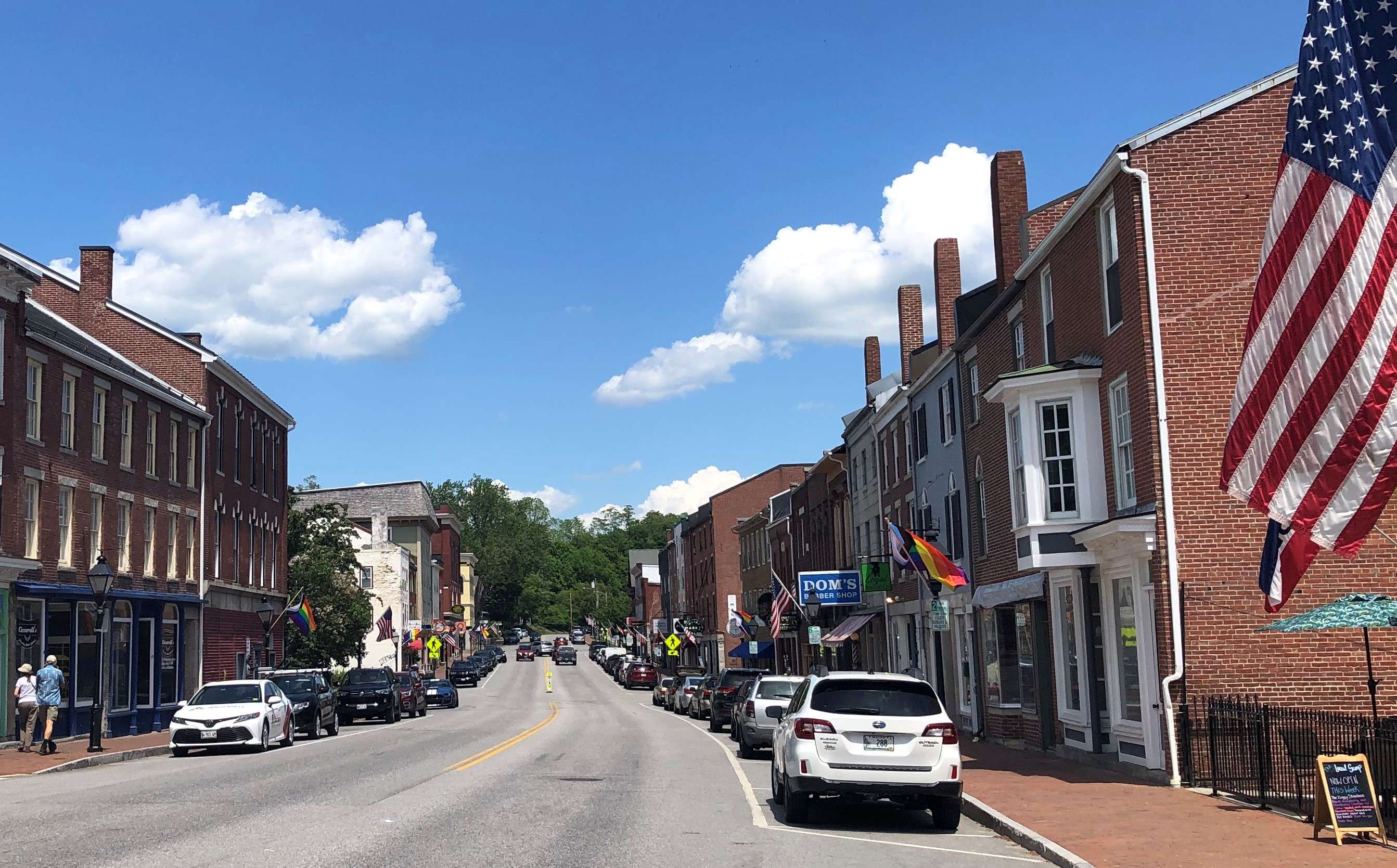
Biz Bites: Maine Law's new home, hello & goodbye at Maine Preservation
 Courtesy / DBI
300 Fore St. will become the new temporary home of the University of Maine School of Law, as well as graduate school administration and staff, while new quarters are built on the USM campus.
Courtesy / DBI
300 Fore St. will become the new temporary home of the University of Maine School of Law, as well as graduate school administration and staff, while new quarters are built on the USM campus.
The University of Maine System has officially signed a lease at 300 Fore St., Portland, with DBI Projects, corporate real estate asset manager for Council on International Educational Exchange. As reported by Mainebiz Senior Writer Renee Cordes last month, the University of Maine Trustees agreed to lease the space for the University of Maine Law School and the system's graduate school administration and staff until a new building to be constructed on the University of Southern Maine Portland campus.

The UMaine crew will lease all 64,000 square feet. CIEE, which has been in the building since it was constructed in 2007, is currently looking for alternative office spaces in the Portland and Boston areas.
And what of the law school’s old home? Designed by the Portland firm Wadsworth, Boston, Dimick, Mercer and Weatherill and opened in 1972, the Brutalist-style building was the height of fashion at the time, but is now “functionally obsolete for the educational needs of the 21st century,” according to the UMaine System. Brutalist, by the way, doesn't mean it's brutal to look at. It comes from the French for "raw." The building was never substantially renovated and it would cost $20 million to do so now, the UMaine System has said. The building will be torn down to make room for the new one.

50TH ANNIVERSARY, GOOD-BYE, HELLO: Tuesday marked Greg Paxton’s last day as executive director of Maine Preservation after 13 years, and the official start for new chief Tara Kelly.
The Zoom annual meeting two weeks ago included a retrospective of Paxton's tenure, a hello from Kelly, and a look back at the roots of the organization, which is celebrating 50 years.
While it's hard to cover the highlights of 13 years, Paxton hit some of them in a slide show looking back at his 13-year career with the Yarmouth-based nonprofit. His tenure got off to an inauspicious start when, in 2008 shortly after he began, he was asked to take a look at the Norway Opera House, which was listed as endangered by Maine Preservation 2003. "It was raining outside, and it was raining inside the Norway Opera House," Paxton said.
When audience members at the 2008 presentation asked for his advice, he said, "Maybe you ought to think about condemning it, it's a public safety hazard." Sure enough, the newspaper the next day had a headline, "Preservationist says condemn historic building."

That didn't happen. The town raised money, and, using Historic Preservation Tax Credits, preserved the building. In 2013 it was named to Maine Preservation's Honor's List and is a commercial centerpiece of downtown.
"The people of Norway really came to understand revitalization through preservation," Paxton said.
There's a footnote. The upper floors still need restoration work. "Tara, you inherit the upper floors," he said to Kelly.
Paxton, who came to here from 25-employee Georgia Trust, grew the nonprofit from a one-and-a-half employee organization to a staff of five, initiated Field Services and Protect & Sell programs and oversaw $430,000 subgrant programs over the past two years that have funded more than 20 projects, among other highlights.
He also lobbied for the state Historic Rehabilitation Tax Credit in 2008, an addition to the national program, and worked to extend and strengthen it. The credit has resulted in more than a half-billion dollars invested in 120 Maine projects.
Maine Preservation's start 50 years ago has roots that go back to a historic home preservation effort in Hallowell, led by Linda Bean, who'd bought the 1792 Dummer House, and Muriel Curtis. Once they documented every historic single-family house in town, they and others took up the cause of saving the city's historic downtown from the wrecking ball. The succesful opposition to the plan to raze the river side of Water Street — it's also U.S. Route 201 — stirred preservationists across Maine to action and, combined with factors too numerous to summarize here, the organization that became Maine Preservation was born.
U.S. Sen. Ed Muskie also played a part in the organization's birth, on a wider scale. Democratic majority leader Lyndon Johnson picked Muskie to head the Public Works Committee, figuring it was "kind of a dead end," for the young upstart from Rumford, according to historian Earle Shettleworth. Muskie proved it wasn't, and led the committee to come up with the National Historic Preservation Act. As well as the Clean Water Act, the Clean Air Act, the National Endowment for the Arts and more.
Video presentations cited here can be found on the Maine Preservation website under "webinars on demand."

KENNEBEC LAND TRUST MILESTONE: Monmouth residents Charlie Jacobs and Rebecca Stanley recently donated a 273-acre conservation easement to the Kennebec Land Trust, bringing the trust's holdings to 7,200 acres.
The property has 123 acres of woodlands, 79 acres of wetlands, 58 acres of open fields and more than 3,670 feet of undeveloped shorefront on Annabessacook Lake.
Aside from the natural features, which include a high concentration of waterfowl and sweeping vistas, the fields include valuable agricultural soil and are a source of hay for Maine dairy and beef operations. The fields will continue to be used for hay. Conservation easements limit the type and scope of development on a property. The land is still privately owned, but is protected.
The addition of the land means the trust now holds easements on 2,360 acres in central Maine, and owns more than 4,600 acres, with 54 miles of trails that are open to the public for outdoor recreation.
SAVING HISTORIC BUILDINGS FROM FLOODS: The National Park Service has developed new flood adaptation guidelines to help historic building owners make their property more resilient to flooding while preserving historic character. Historic properties that have never flooded before are now at risk, and those that had infrequent flooding are seeing more as the sea level rises, the park service said.
The Guidelines on Flood Adaptation for Rehabilitating Historic Buildings offers options for treatment that focuses on preservation as well. The guidelines are the most recent in a series that includes guidelines for typical rehabilitation and special topics such as sustainability.

RIBBON-CUTTINGS AROUND MAINE: Behind every ribbon-cutting there's a happy story. Here are two from this week.
Luke’s Small Engine Shop held a grand opening and ribbon-cutting at its new location, 369 Van Buren Road, in Caribou.
Owner Lucas Roy started repairing engines out of his garage in Connor in 2018, and there was so much demand that he hired two employees this spring. The shop in late May moved from its original spot into 1,300 square feet that most recently housed Soucey’s Saw Shop. Roy also sells small tractors and other equipment.
The ribbon-cutting last weekend was hosted by the Central Aroostook Chamber of Commerce.
Farther south, N.C. Hunt Lumber will hold a ribbon-cutting for its new design center, Living Spaces by N.C. Hunt, 241 U.S. Route 1, Damariscotta, Friday. The center is an expansion of the showroom the Jefferson-based sawmill opened in 2009.
The new space comes as the company quickly recovered from a fire that destroyed the Jefferson mill in March 2019. In April 2020, N.C. Hunt finished construction on a two-story 11,900-square-foot steel frame building to replace the wooden one that burned.














0 Comments